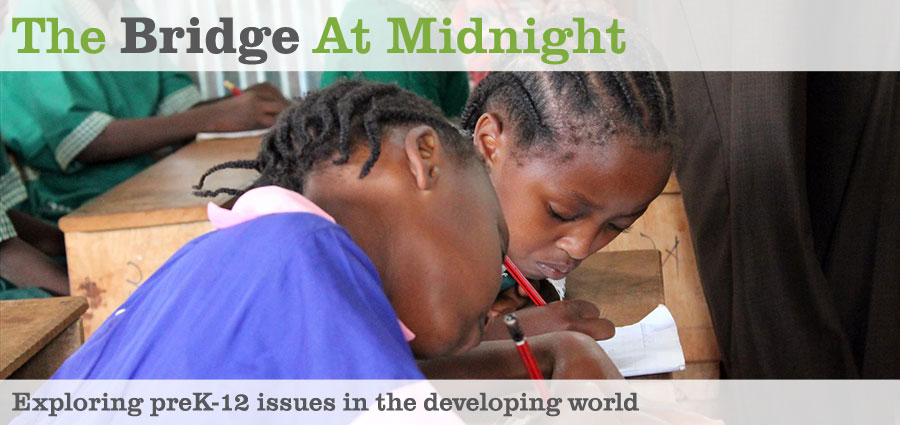Great News From the Developing World
Posted: October 1st, 2015 | Author: Michael Goldstein | | 3 Comments »
In the NY Times, Nick Kristof writes (hat tip Whitney Tilson):
• The number of extremely poor people (defined as those earning less than $1 or $1.25 a day, depending on who’s counting) rose inexorably until the middle of the 20th century, then roughly stabilized for a few decades. Since the 1990s, the number of poor has plummeted.
• In 1990, more than 12 million children died before the age of 5; this toll has since dropped by more than half.
• More kids than ever are becoming educated, especially girls. In the 1980s, only half of girls in developing countries completed elementary school; now, 80 percent do.
The most important thing going on in the world today is something we almost never cover: a rapid decline in poverty, illiteracy and disease.
Granted, some 16,000 children still die unnecessarily each day. It’s maddening in my travels to watch children dying simply because they were born in the wrong place at the wrong time.
But one reason for our current complacency is a feeling that poverty is inevitable — and that’s unwarranted.
The world’s best-kept secret is that we live at a historic inflection point when extreme poverty is retreating.
Read the whole thing here.
Cato Institute adds:
But, where did all the progress that Kristof talks about come from?
The Homo sapiens has been on this earth for 200,000 years. For 99.9% of that time, we lived in ignorance, poverty and misery. What has changed? Reading the NYT, the reader is left with the impression that “good stuff,” like manna from heaven, suddenly was conjured up out of thin air.
Not so. The key to the improvements in the lives of ordinary people over the last 200 years were industrialization and trade, which generated historically unprecedented rates of growth. And the importance of growth cannot be overemphasized. There is not a single example of a country emerging from widespread poverty without sustained economic growth. As University of Oxford Professor Paul Collier writes, “Growth is not a cure-all, but lack of growth is a kill-all.”
As a reader of Kristof’s column, I was not left with the impression that this progress was conjured up out of thin air.
But I agree with Cato that industrialization and trade are important drivers here.
I think private philanthropy has helped, particularly in health, and it would seem that Cato and Kristof agree here too.
I think getting more girls to attend school is perhaps less driven by industrialization. Some progress on supply-side issues and demand-side issues (like social norms). World Bank, maybe even the oft-maligned (by me included) UN, has likely had some role here influencing policy.
Unlike progress in school enrollment, however, I don’t think there is much good news on actual learning. I.e., more kids are spending more days in school (particularly girls) — good! But grimmer news on how much they learn (boys and girls) once in school (bad).
Just like in the USA, where policy can’t easily pierce schools to the day-to-day classroom reality of kids and teachers, so too in poor nations.
The 3 key limiting factors from inside a typical school in the developing world:
a. Strong strong strong pedagogical preference for “teacher lectures and writes some stuff on the board, while kids sit still, and copy notes.”
We’ve made progress on changing this at Bridge.
b. Virtually no reading of good fiction (by any definition) or non-textbook non-fiction. Related: If they do read, they typically can’t read and summarize the key ideas in their own words…it’s not even what they’re instinctively trying to do (to form meaning as they read, which until 2013 I thought was an intuitive thing to try to do, but I no longer think that).
We’re in early phases of trying to create some breakthroughs here.
c. Kids frequently don’t know how to form meaningful questions of their own, let alone ask them out loud.
This puzzle needs a lot more work. I’m interested in anyone who has seen breakthroughs here. Our early efforts have “bounced off” (unlike “a” above, where we’ve had success). We’re gearing up (resources permitting) for a new dive here in 2016.


Dear Mike,
Thanks for calling attention to Kristoff” piece — and Cato’s rejoinder. But I think you miss an important part of Kristoff’s message: that 90 percent of Americans are wrong! It is not a small matter and it is especially important in an education reform context. My laptop battery is dying so I can’t offer an elaboration on that point, but it is connected to your 3 “limiting factors.”
Hi, Mike–Regarding “c,” here is one approach I’ve developed that works: https://theliteracycookbook.wordpress.com/2013/11/27/the-1-close-reading-skill/
I would be happy to discuss this further.
Cheers,
SarahT.
PS– Also important to note: the second-grade version of Common Core Standard #1 for Reading Informational Text requires students to ask and answer the 5W’s and H questions. This is arguably the most high-leverage standard among all of them. Unfortunately, many people assume students can already do it, so they don’t directly teach it. If you can’t do this standard, particularly if you can’t ask and answer “Why” and “How” questions effectively, you struggle to infer. And if you struggle to infer, that means you also can’t EXPLAIN things. Which means you can’t write much more than a list. Here is an early TLC blog on this issue. I am working on a more elaborated version. https://theliteracycookbook.wordpress.com/2013/10/21/approaches-to-the-common-core-how-to-teach-rit-standard-1-in-elementary-school/
Again, happy to discuss.
ST